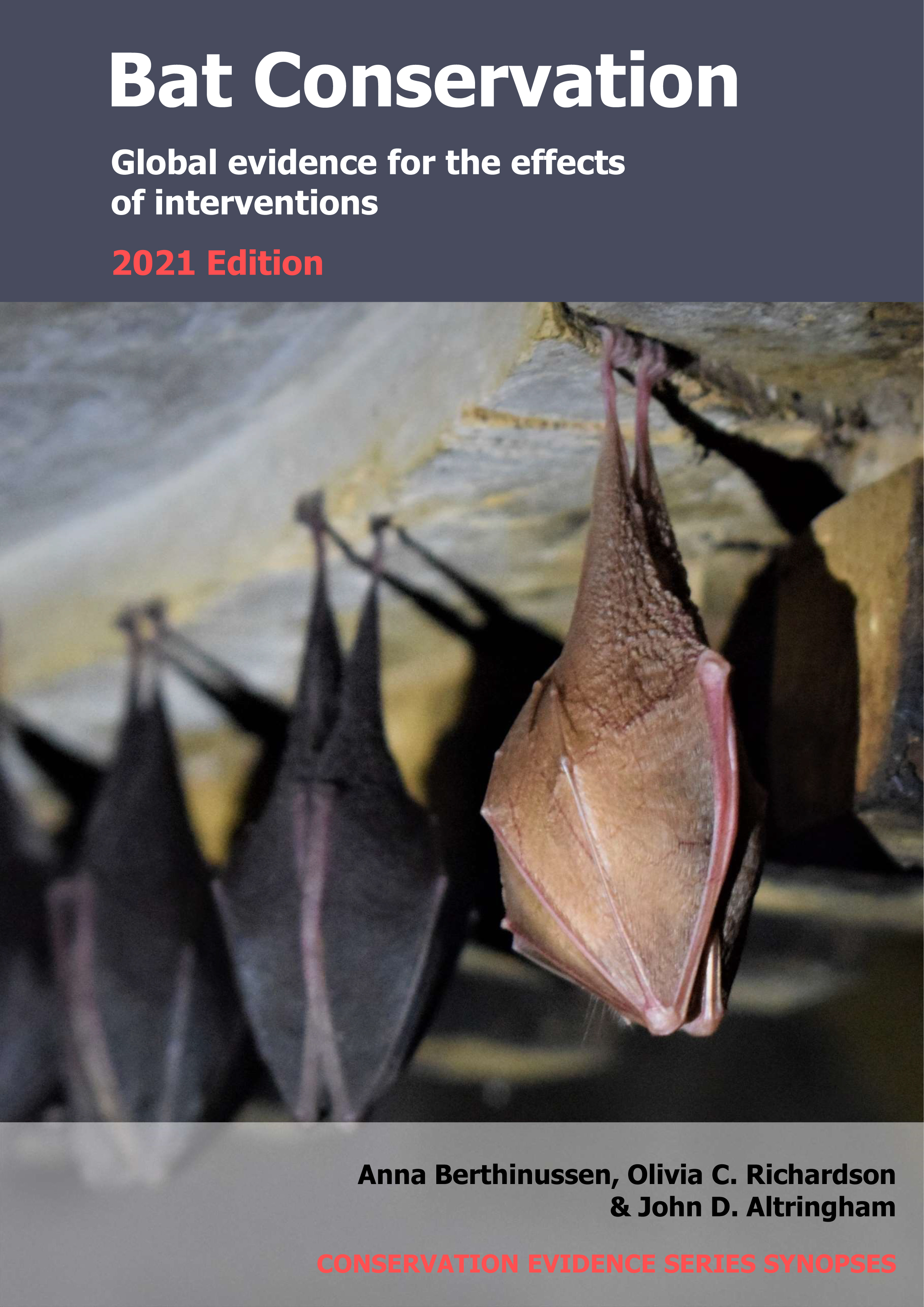Create artificial hollows and cracks in trees for roosting bats
-
Overall effectiveness category Unknown effectiveness (limited evidence)
-
Number of studies: 1
View assessment score
Hide assessment score
How is the evidence assessed?
-
Effectiveness
50% -
Certainty
23% -
Harms
0%
Study locations
Supporting evidence from individual studies
A replicated study in 2015–2016 of 16 trees within a timber production forest in New South Wales, Australia (Rueegger 2017) found that half of the artificial hollows created in trees were used by long-eared bats Nyctophilus spp., and the design of the entrance did not have a significant effect on use. Eight of 16 artificial hollows were used by long-eared bats, including one of six hollows designed for bats and seven of 10 hollows designed for marsupials and birds, although use of the two designs did not differ significantly. Artificial hollows were created in 16 trees (33–54 mm diameter at breast height) within a forested area of 4 ha. In September 2015, one hollow (35 cm high x 9–20 cm wide and 4 m above the ground) was created in each of 16 trees using a chainsaw. A section of tree (4 cm deep) was reattached to the front of each hollow with an entrance hole either at the base (designed for bats, 38 mm diameter) or the top (designed for marsupials and birds, 38 or 76 mm diameter). Each of 16 hollows was monitored over 12–15 months in 2015–2016 with heat/motion activated cameras.
Study and other actions tested
Where has this evidence come from?
List of journals searched by synopsis
All the journals searched for all synopses
This Action forms part of the Action Synopsis:
Bat Conservation
Bat Conservation - Published 2021
Update 2020





)_2023.JPG)














